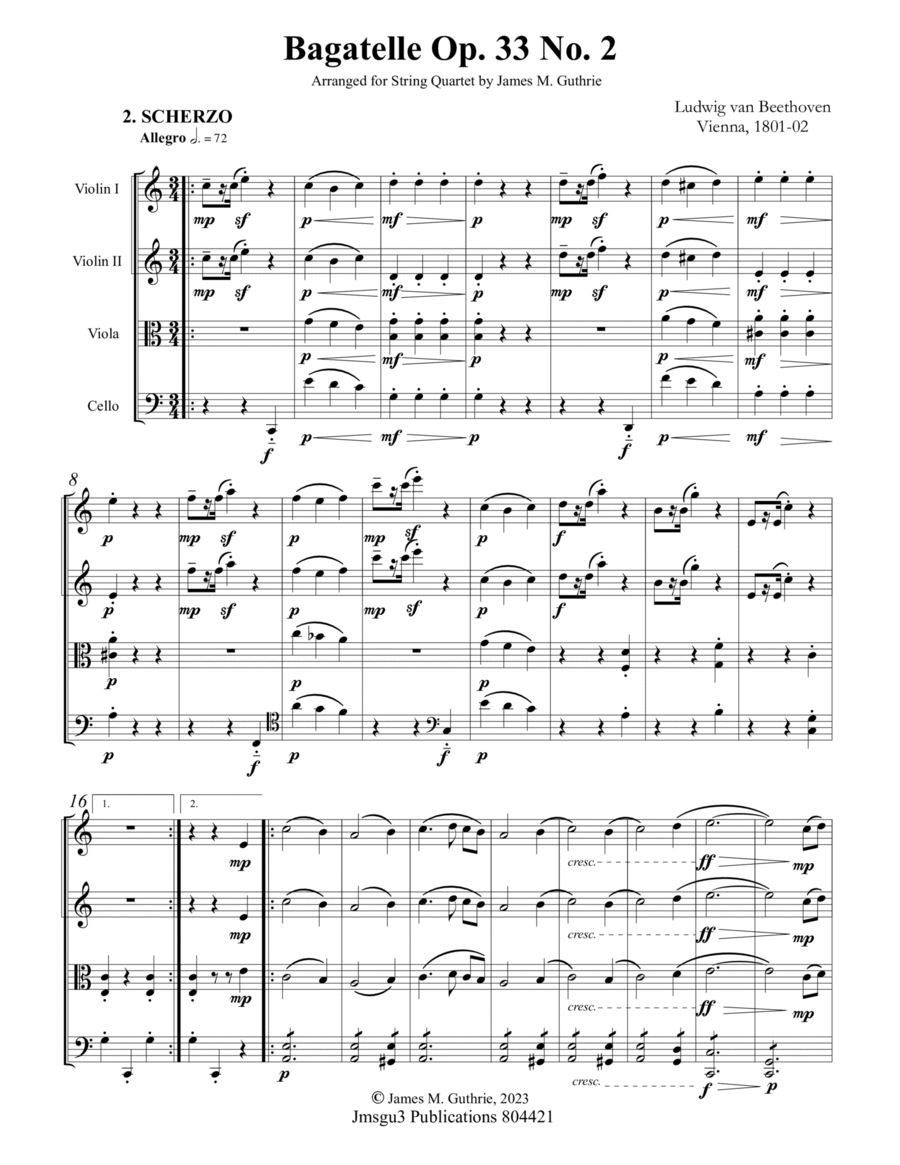String Quartet Cello,String Quartet,Viola,Violin - Level 4 - Digital Download SKU: A0.1206223 Composed by Ludwig van Beethoven (1770 – 1827). Arranged by James M. Guthrie, ASCAP. 19th Century,Chamber,Classical,Contest,Festival,Wedding. 14 pages. Jmsgu3 #804421. Published by jmsgu3 (A0.1206223). No. 2. Scherzo: Allegro.Beethoven's Bagatelles Op. 33 are quite typical of his early style, retaining many compositional features of the early Classical period.  The first bagatelle in particular is arguably one of Beethoven's most well-known pieces. While they may seem light-hearted and not to be taken too seriously, they are still well-crafted works that embody the younger Beethoven's style. The Bagatelles Op. 33 were composed by Beethoven in 1801-02 and published in 1803. Bagatelles are shorter and less complex than sonatas, often consisting of a single movement. They were intended to be played as light entertainment or as encores at the end of a concert.The Bagatelle No. 2 of Op. 33 follows a simple ternary form, with a lively and playful Scherzo character. The piece is in the key of C major and is written in 2/4 time signature. The A section is characterized by a catchy and rhythmic melody that is repeated twice, with slight variations in the second repetition. The B section, in the relative key of A minor, provides a contrast to the A section with a more lyrical and expressive melody. The B section is also repeated twice, with slight variations in the second repetition. The A section returns in its original form to close the piece. The piece is relatively simple in terms of harmony and texture, with a clear melody and accompaniment. However, Beethoven's use of repetition, variation, and elaboration creates a sense of unity and coherence throughout the piece.
